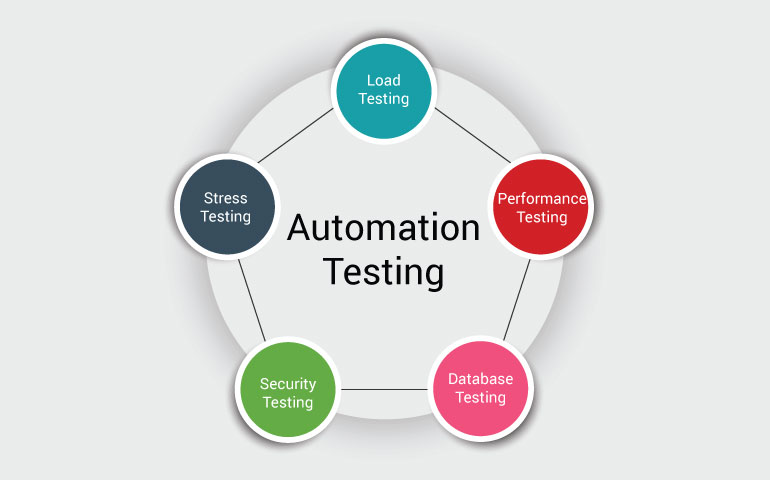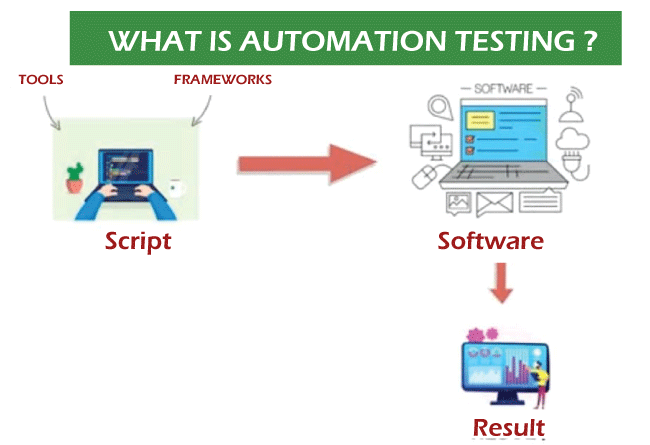From Handbook to Automated Testing: A Comprehensive Overview to Transitioning Smoothly and Effectively
In the realm of software testing, the shift from manual to automated processes has ended up being a progressively crucial shift for companies looking for to enhance efficiency and precision in their screening methods. As innovation proceeds to advancement, the requirement for reliable and smooth computerized testing methods has never ever been more important. The trip from handbook to automated testing is not without its obstacles, but when come close to purposefully and with a clear plan in mind, the advantages can be considerable - automation testing. In this extensive guide, we will certainly explore vital actions and factors to consider essential for a successful transition, from the first choice of tools to the combination of automation into existing workflows. Remain tuned to uncover the understandings that will certainly help pave the way for a smoother and a lot more effective testing process.
Advantages of Automated Evaluating
Automated screening provides countless advantages, boosting effectiveness and precision in software program advancement processes. One main advantage is the considerable decrease in testing time. Automated examinations can be run concurrently on multiple tools and operating systems, drastically accelerating the screening phase compared to hand-operated testing. This boosted efficiency permits faster comments on the high quality of the software, allowing programmers to recognize and deal with problems without delay.
Additionally, automated screening makes certain a greater level of accuracy in finding flaws. Given that automated examinations adhere to predefined manuscripts, human mistake is decreased, bring about even more reliable test results. Consistency in screening is additionally boosted, as automated examinations implement the very same actions exactly each time they are run. This consistency is important in making certain that all capabilities of the software application are completely checked, minimizing the possibility of undiscovered bugs sliding via to production.
Picking the Right Tools

First of all, analyze your needs and purposes. Recognize the extent of your job, the innovations entailed, and the ability of your team. This analysis will help you figure out the abilities and attributes you need in your testing tools.
Secondly, take into consideration the compatibility of the devices with your existing processes and systems. Seamless assimilation with your current software program development lifecycle is important to guarantee a smooth shift to automation.
In addition, review the scalability and flexibility of the devices. As your screening needs develop, the devices ought to be able to adjust and fit adjustments successfully.
Last but not least, aspect in the support and area around the tools. When carrying out automated testing, durable support and an energetic user area can offer valuable sources and assistance. By carefully taking into consideration these aspects, you can select the right devices that line up with your needs and set the phase for a successful shift to automated screening.
Composing Reliable Test Manuscripts

When crafting test manuscripts, it is necessary to consider the details demands Go Here of the software program being tested and make certain that the scripts resolve all important capabilities. Clear and detailed naming conventions for examination manuscripts and test situations can enhance readability and maintainability. Furthermore, incorporating mistake handling mechanisms within the examination manuscripts can help in identifying and addressing concerns immediately.
Additionally, organizing examination manuscripts into modular elements can improve reusability and scalability, minimizing redundancy and boosting effectiveness in examination manuscript maintenance. Routine testimonials and updates to test scripts are critical to keep speed with progressing software demands and capabilities. By following these principles, testers can produce robust and reliable test manuscripts that contribute substantially to the success of automated screening processes.
Integrating Automation Into Workflows
By perfectly incorporating automated testing devices like Selenium or Appium right into the software application growth lifecycle, groups can accomplish faster comments on code modifications, leading to quicker pest discovery and resolution. This combination permits for continuous testing throughout the advancement process, making certain that any problems are identified early on, resulting in higher software application top quality. Proper integration of automation tools requires cooperation between development, screening, and procedures teams to establish a unified process that enhances effectiveness and performance in delivering premium software items.
Ensuring a Smooth Change
Efficiently transitioning to automated testing involves thorough planning and cautious implementation to lessen disruptions and maximize efficiency in the software advancement process - automation testing. To make certain a smooth transition, it is necessary to begin by conducting a detailed evaluation of the present screening processes and recognizing locations where automation can bring the most substantial advantages. Engaging with all stakeholders at an early stage in the process, including programmers, testers, and task supervisors, is crucial for garnering support and buy-in for the read more automation initiative
Communication is essential during this transition phase. Clear communication of the goals, benefits, and expectations of automated screening aids to take care of any kind of resistance or problems that might emerge. In addition, giving ample training and sources for group participants to upskill in automation devices and methods is crucial for making sure a successful transition.

Verdict
Finally, transitioning from guidebook to automated testing offers various advantages, consisting of raised performance and reliability. By selecting the suitable tools, composing reliable test scripts, and integrating automation effortlessly into workflows, organizations can make certain a smooth and successful change. It is important to welcome automation as a valuable property in software testing procedures to boost overall top quality and efficiency.
In the realm of software application testing, the change from guidebook to automated processes has actually become an increasingly important transition for organizations seeking to enhance performance and precision in their screening methods. Automated tests can be run simultaneously on multiple tools and running systems, dramatically speeding up the screening phase contrasted to manual testing. Uniformity in screening is also boosted, as automated examinations perform the look what i found same actions exactly each time they are run.To guarantee the effective execution of picked testing devices, the development of effective test scripts plays a critical duty in verifying the performance and efficiency of automated processes - automation testing. By following these concepts, testers can create efficient and durable test manuscripts that add dramatically to the success of automated testing procedures